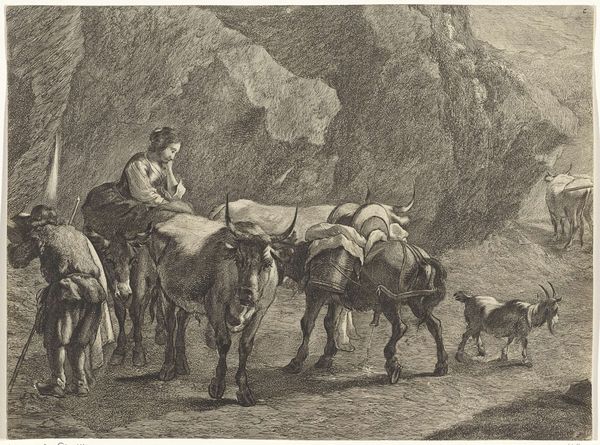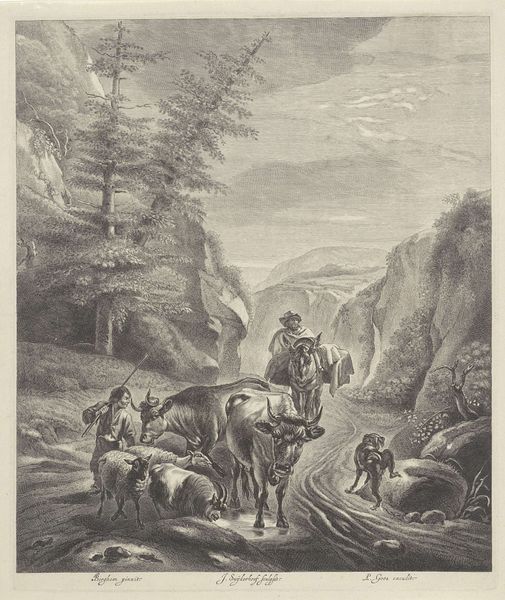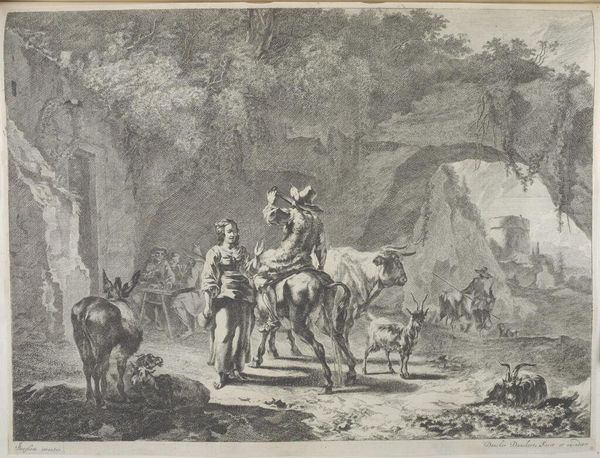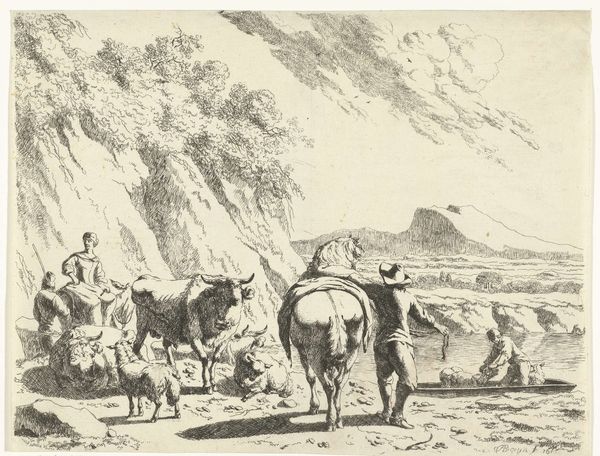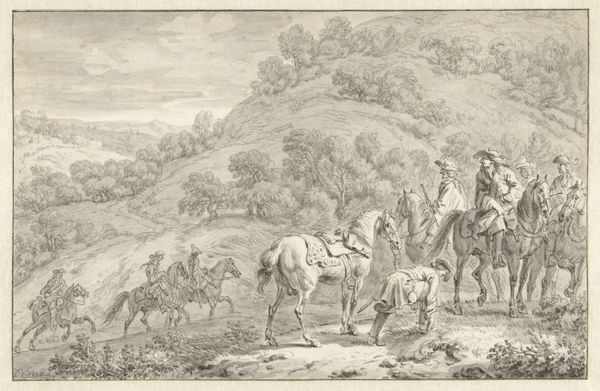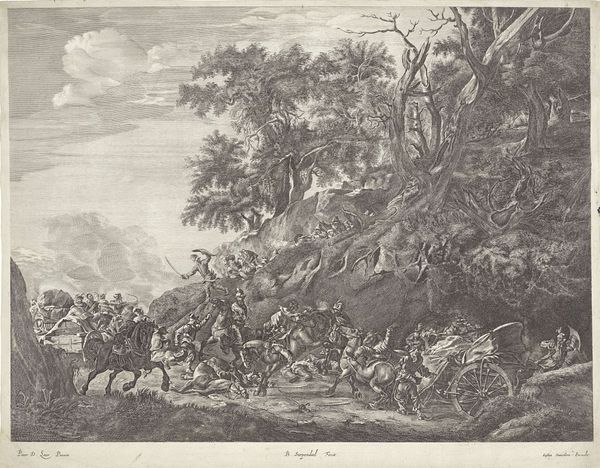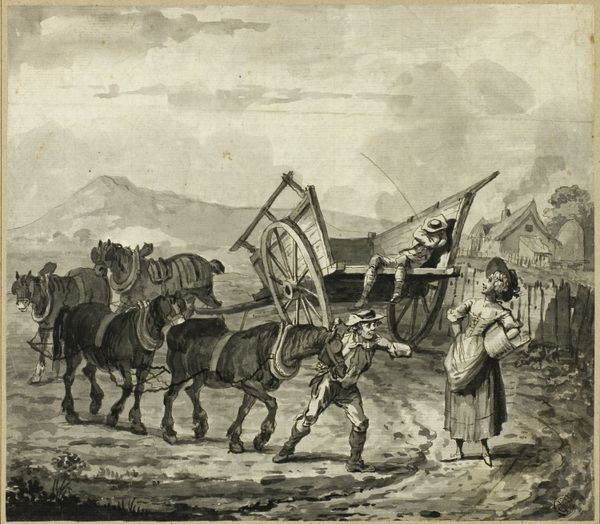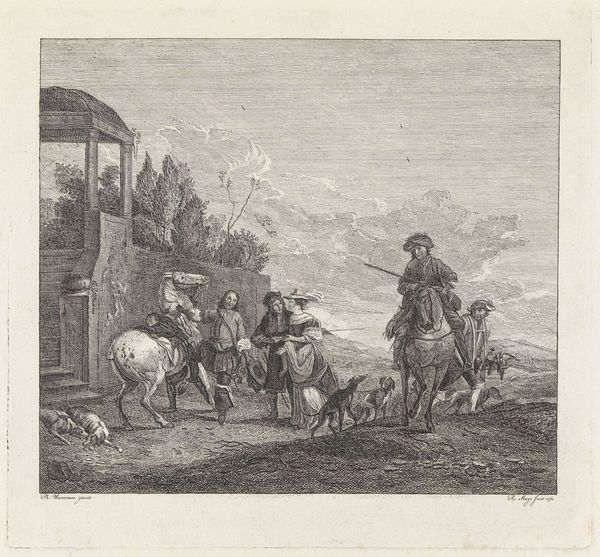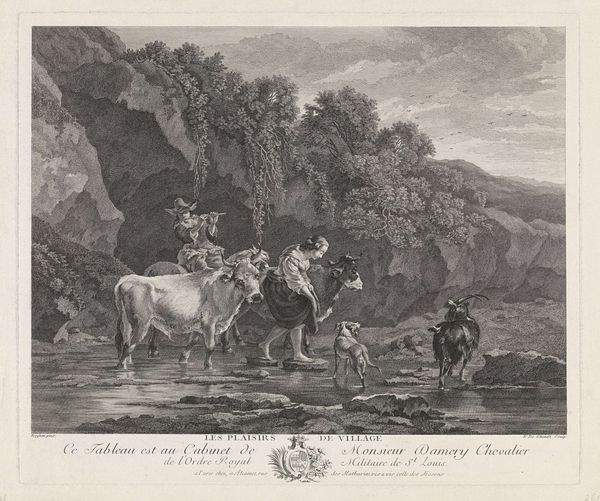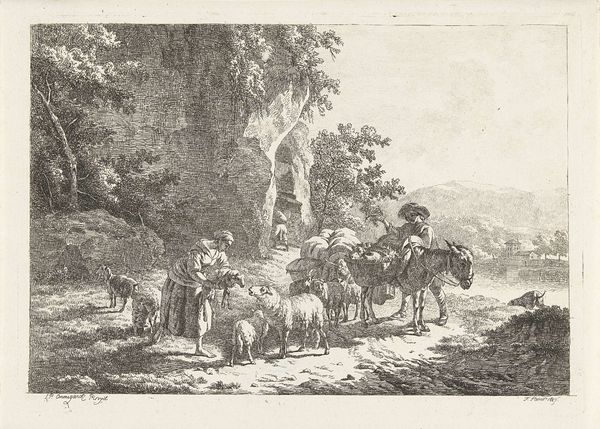
print, engraving
#
pencil drawn
#
toned paper
#
dutch-golden-age
# print
#
landscape
#
waterfall
#
figuration
#
pencil drawing
#
line
#
genre-painting
#
history-painting
#
engraving
#
realism
Dimensions: height 291 mm, width 392 mm
Copyright: Rijks Museum: Open Domain
Curator: Cornelis Visscher created this intriguing scene, "Rocky Landscape with Herdsmen," sometime between 1638 and 1658. It’s currently held in the Rijksmuseum collection. Editor: It's quite evocative, isn’t it? My immediate impression is one of… weariness, perhaps? There’s something about the way the figures are positioned against that looming rock face; it feels like a journey that’s taken its toll. Curator: It certainly does suggest a strenuous journey. Genre scenes like these were quite popular in the Dutch Golden Age, capturing everyday life often infused with allegorical meanings. The rugged landscape itself contributes significantly to its reception. Editor: Yes, landscapes often reflected socio-political views of that time, sometimes even providing veiled criticisms of land use. The use of what looks like pencil and toned paper enhances the rough, unidealized view, placing more value in a type of realistic landscape compared to romanticized pastoral themes. What do you see in this rocky scene? Curator: Considering the socio-economic realities of the 17th century, the landscape and its inhabitants gain meaning. Land was wealth. Visscher has captured a world defined by its harsh geography but where laborers were also finding paths. These rugged hills allowed unique imagery into painting as society diversified. Editor: Looking at the role of animals too—burdened down in transit on dangerous paths – that raises uncomfortable questions around the power dynamics at work in these pastoral idylls. Even within such classical artistic constraints the artist has placed in front of us some crucial realities. Curator: The contrast with courtly art could not be starker. Instead of portraying monarchs in grand palaces, there are rural workers struggling against both nature and, likely, larger systems of power controlling them. How they negotiated the market dynamics becomes important. Editor: Exactly! And understanding the gender dynamics adds more nuance; what’s it mean to position the women so centrally on a trail where she too must carry the weight of labour alongside animal pack? Curator: By understanding such prints alongside cultural transformations happening around Dutch identity and governance itself lets us unlock deeper understandings about representation, nationhood, and agency during this vital moment of history itself! Editor: It is incredible how one deceptively simple image can still offer such resonant narratives today around landscape use, and the intersectional narratives concerning identity that the labour of class, race, and gender can entail!
Comments
No comments
Be the first to comment and join the conversation on the ultimate creative platform.
